-
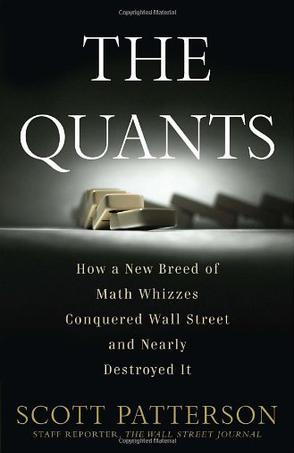
The Quants
“Beware of geeks bearing formulas.” --Warren Buffett In March of 2006, the world’s richest men sipped champagne in an opulent New York hotel. They were preparing to compete in a poker tournament with million-dollar stakes, but those numbers meant nothing to them. They were accustomed to risking billions. At the card table that night was Peter Muller, an eccentric, whip-smart whiz kid who’d studied theoretical mathematics at Princeton and now managed a fabulously successful hedge fund called PDT…when he wasn’t playing his keyboard for morning commuters on the New York subway. With him was Ken Griffin, who as an undergraduate trading convertible bonds out of his Harvard dorm room had outsmarted the Wall Street pros and made money in one of the worst bear markets of all time. Now he was the tough-as-nails head of Citadel Investment Group, one of the most powerful money machines on earth. There too were Cliff Asness, the sharp-tongued, mercurial founder of the hedge fund AQR, a man as famous for his computer-smashing rages as for his brilliance, and Boaz Weinstein, chess life-master and king of the credit default swap, who while juggling $30 billion worth of positions for Deutsche Bank found time for frequent visits to Las Vegas with the famed MIT card-counting team. On that night in 2006, these four men and their cohorts were the new kings of Wall Street. Muller, Griffin, Asness, and Weinstein were among the best and brightest of a new breed, the quants . Over the prior twenty years, this species of math whiz --technocrats who make billions not with gut calls or fundamental analysis but with formulas and high-speed computers-- had usurped the testosterone-fueled, kill-or-be-killed risk-takers who’d long been the alpha males the world’s largest casino. The quants believed that a dizzying, indecipherable-to-mere-mortals cocktail of differential calculus, quantum physics, and advanced geometry held the key to reaping riches from the financial markets. And they helped create a digitized money-trading machine that could shift billions around the globe with the click of a mouse. Few realized that night, though, that in creating this unprecedented machine, men like Muller, Griffin, Asness and Weinstein had sowed the seeds for history’s greatest financial disaster. Drawing on unprecedented access to these four number-crunching titans, The Quants tells the inside story of what they thought and felt in the days and weeks when they helplessly watched much of their net worth vaporize – and wondered just how their mind-bending formulas and genius-level IQ’s had led them so wrong, so fast. Had their years of success been dumb luck, fool’s gold, a good run that could come to an end on any given day? What if The Truth they sought -- the secret of the markets -- wasn’t knowable? Worse, what if there wasn’t any Truth? In The Quants , Scott Patterson tells the story not just of these men, but of Jim Simons, the reclusive founder of the most successful hedge fund in history; Aaron Brown, the quant who used his math skills to humiliate Wall Street’s old guard at their trademark game of Liar’s Poker, and years later found himself with a front-row seat to the rapid emergence of mortgage-backed securities; and gadflies and dissenters such as Paul Wilmott, Nassim Taleb, and Benoit Mandelbrot. With the immediacy of today’s NASDAQ close and the timeless power of a Greek tragedy, The Quants is at once a masterpiece of explanatory journalism, a gripping tale of ambition and hubris…and an ominous warning about Wall Street’s future. -
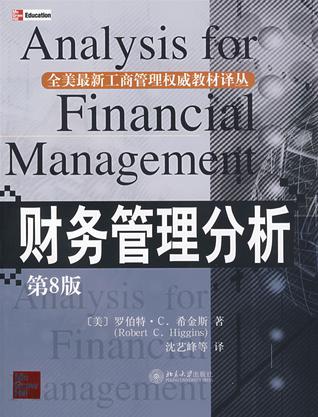
财务管理分析
《财务管理分析(第8版)》全面介绍了财务管理的基础知识,以及财务管理的各项指标和操作技术,一直被认为是“介绍财务管理基础知识的最好入门书”,有“财务小圣经”之美誉。《财务管理分析(第8版)》是哈佛等全美一流商学院学生的必备教材,并被美国各类银行管理培训班作为教材广泛采用。 -
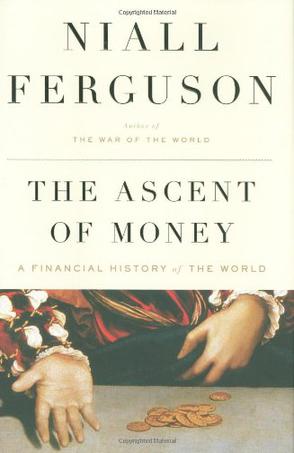
The Ascent of Money
在线阅读本书 Niall Ferguson follows the money to tell the human story behind the evolution of finance, from its origins in ancient Mesopotamia to the latest upheavals on what he calls Planet Finance . Bread, cash, dosh, dough, loot, lucre, moolah, readies, the wherewithal: Call it what you like, it matters. To Christians, love of it is the root of all evil. To generals, its the sinews of war. To revolutionaries, its the chains of labor. But in The Ascent of Money , Niall Ferguson shows that finance is in fact the foundation of human progress. Whats more, he reveals financial history as the essential backstory behind all history. Through Fergusons expert lens familiar historical landmarks appear in a new and sharper financial focus. Suddenly, the civilization of the Renaissance looks very different: a boom in the market for art and architecture made possible when Italian bankers adopted Arabic mathematics. The rise of the Dutch republic is reinterpreted as the triumph of the worlds first modern bond market over insolvent Habsburg absolutism. And the origins of the French Revolution are traced back to a stock market bubble caused by a convicted Scot murderer. With the clarity and verve for which he is known, Ferguson elucidates key financial institutions and concepts by showing where they came from. What is money? What do banks do? Whats the difference between a stock and a bond? Why buy insurance or real estate? And what exactly does a hedge fund do? This is history for the present. Ferguson travels to post-Katrina New Orleans to ask why the free market cant provide adequate protection against catastrophe. He delves into the origins of the subprime mortgage crisis. Perhaps most important, The Ascent of Money documents how a new financial revolution is propelling the worlds biggest countries, India and China, from poverty to wealth in the space of a single generationan economic transformation unprecedented in human history. Yet the central lesson of the financial history is that sooner or later every bubble burstssooner or later the bearish sellers outnumber the bullish buyers, sooner or later greed flips into fear. And thats why, whether youre scraping by or rolling in it, theres never been a better time to understand the ascent of money. -
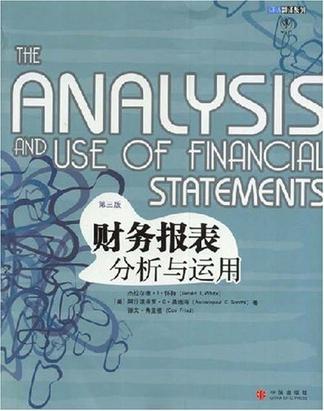
财务报表分析与运用
《财务报表分析与运用》每章末的问题部分大多也是以真实公司的资料为基础,一些问题是从CFA考试试题改编而来,以便读者将课本知识运用到真实的财务报表中。《财务报表分析与运用》旨在使读者能更好地确认财务报告的固有风险,同时更好地做出分析调整从而避免由于采用过分激进的会计方法所导致的许多陷阱,并鼓励分析师对报告资料进行批判性的思考而不是在用于估价目的时盲目地接受它们。 -

Financial Modeling
Too often, finance courses stop short of making a connection between textbook finance and the problems of real-world business. Financial Modeling bridges this gap between theory and practice by providing a nuts-and-bolts guide to solving common financial models with spreadsheets. Simon Benninga takes the reader step by step through each model, showing how it can be solved using Microsoft Excel. The long-awaited third edition of this standard text maintains the "cookbook" features and Excel dependence that have made the first and second editions so popular. It also offers significant new material, with new chapters covering such topics as bank valuation, the Black-Litterman approach to portfolio optimization, Monte Carlo methods and their applications to option pricing, and using array functions and formulas. Other chapters, including those on basic financial calculations, portfolio models, calculating the variance-covariance matrix, and generating random numbers, have been revised, with many offering substantially new and improved material. Other areas covered include financial statement modeling, leasing, standard portfolio problems, value at risk (VaR), real options, duration and immunization, and term structure modeling. Technical chapters treat such topics as data tables, matrices, the Gauss-Seidel method, and tips for using Excel. The last section of the text covers the Visual Basic for Applications (VBA) techniques needed for the book. The accompanying CD contains Excel worksheets and solutions to end-of-chapter exercises. -
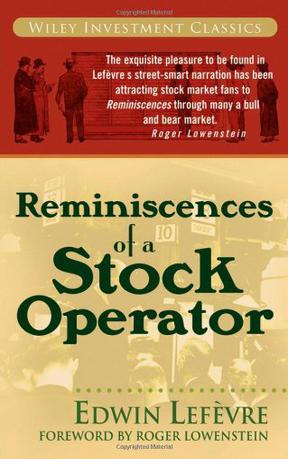
Reminiscences of a Stock Operator
Reminiscences of a Stock Operator "… I learned early that there is nothing new in Wall Street. There can’t be because speculation is as old as the hills. Whatever happens in the stock market today has happened before and will happen again. I’ve never forgotten that.… The fact that I remember that way is my way of capitalizing experience." —from Reminiscences of a Stock Operator First published in 1923, Reminiscences of a Stock Operator is the fictionalized biography of Jesse Livermore, one of the greatest speculators who ever lived. Now, more than 70 years later, Reminiscences remains the most widely read, highly recommended investment book ever written. Generations of investors have found that it has more to teach them about themselves and other investors than years of experience in the market. They have also discovered that its trading advice and keen analyses of market price movements ring as true today as in 1923. Jesse Livermore won and lost tens of millions of dollars playing the stock and commodities markets during the early 1900s—at one point making the thenastronomical amount of ten million dollars in just one month of trading. So potent a market force was he in his day that, in 1929, he was widely believed to be the man responsible for causing the Crash. He was forced into seclusion and had to hire a bodyguard. Originally reviewed in The New York Times as a nonfiction book, Reminiscences of a Stock Operator vividly recounts Livermore’s mastery of the markets from the age cf 14. Always good at figures, he learns, early on, that he can predict which way the numbers will go. Starting out with an investment of five dollars, he amasses a fortune by his early twenties and establishes himself as a major player on the Street. He makes his first killing in 1906, selling short on Union Pacific. He goes on to corner the cotton market, and has a million-dollar day Bullish in bear markets and bearish among bulls, he claims that only suckers gamble on the market. The trick, he advises, is to protect yourself by balancing your investments, and selling big on the way down. Livermore goes broke three times, but he comes back each time feeling richer for the learning experience. Offering profound insights into the motivations, attitudes, and feelings shared by every investor, Reminiscences of a Stock Operator is a timeless instructional tale that will enrich the lives—and portfolios—of today’s traders as it has those of generations past. --This text refers to the Hardcover edition.